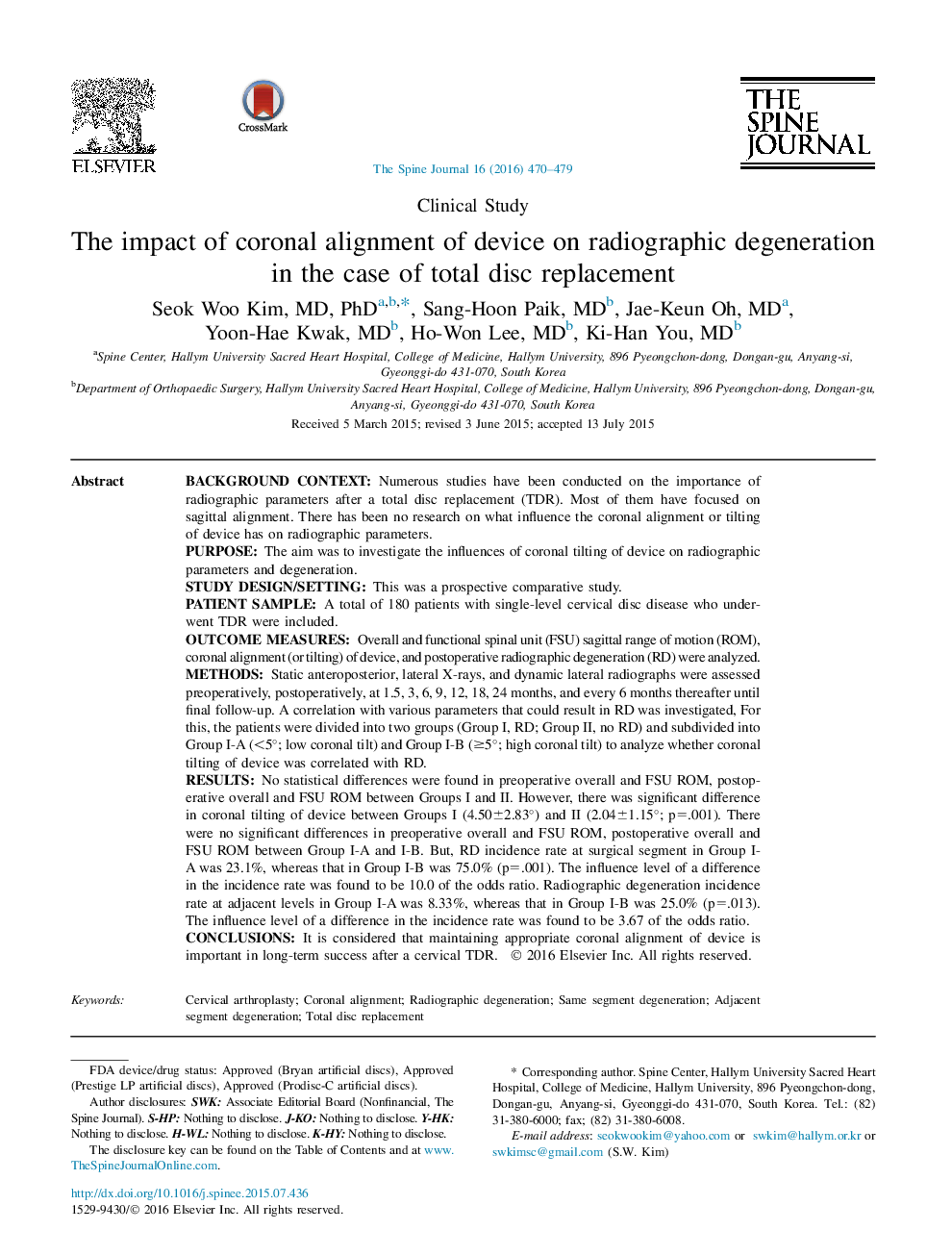| Article ID | Journal | Published Year | Pages | File Type |
|---|---|---|---|---|
| 6211707 | The Spine Journal | 2016 | 10 Pages |
Background contextNumerous studies have been conducted on the importance of radiographic parameters after a total disc replacement (TDR). Most of them have focused on sagittal alignment. There has been no research on what influence the coronal alignment or tilting of device has on radiographic parameters.PurposeThe aim was to investigate the influences of coronal tilting of device on radiographic parameters and degeneration.Study design/settingThis was a prospective comparative study.Patient SampleA total of 180 patients with single-level cervical disc disease who underwent TDR were included.Outcome measuresOverall and functional spinal unit (FSU) sagittal range of motion (ROM), coronal alignment (or tilting) of device, and postoperative radiographic degeneration (RD) were analyzed.MethodsStatic anteroposterior, lateral X-rays, and dynamic lateral radiographs were assessed preoperatively, postoperatively, at 1.5, 3, 6, 9, 12, 18, 24 months, and every 6 months thereafter until final follow-up. A correlation with various parameters that could result in RD was investigated, For this, the patients were divided into two groups (Group I, RD; Group II, no RD) and subdivided into Group I-A (<5°; low coronal tilt) and Group I-B (â¥5°; high coronal tilt) to analyze whether coronal tilting of device was correlated with RD.ResultsNo statistical differences were found in preoperative overall and FSU ROM, postoperative overall and FSU ROM between Groups I and II. However, there was significant difference in coronal tilting of device between Groups I (4.50±2.83°) and II (2.04±1.15°; p=.001). There were no significant differences in preoperative overall and FSU ROM, postoperative overall and FSU ROM between Group I-A and I-B. But, RD incidence rate at surgical segment in Group I-A was 23.1%, whereas that in Group I-B was 75.0% (p=.001). The influence level of a difference in the incidence rate was found to be 10.0 of the odds ratio. Radiographic degeneration incidence rate at adjacent levels in Group I-A was 8.33%, whereas that in Group I-B was 25.0% (p=.013). The influence level of a difference in the incidence rate was found to be 3.67 of the odds ratio.ConclusionsIt is considered that maintaining appropriate coronal alignment of device is important in long-term success after a cervical TDR.
